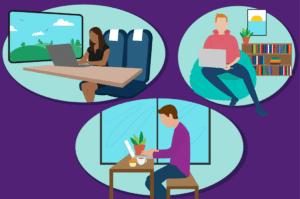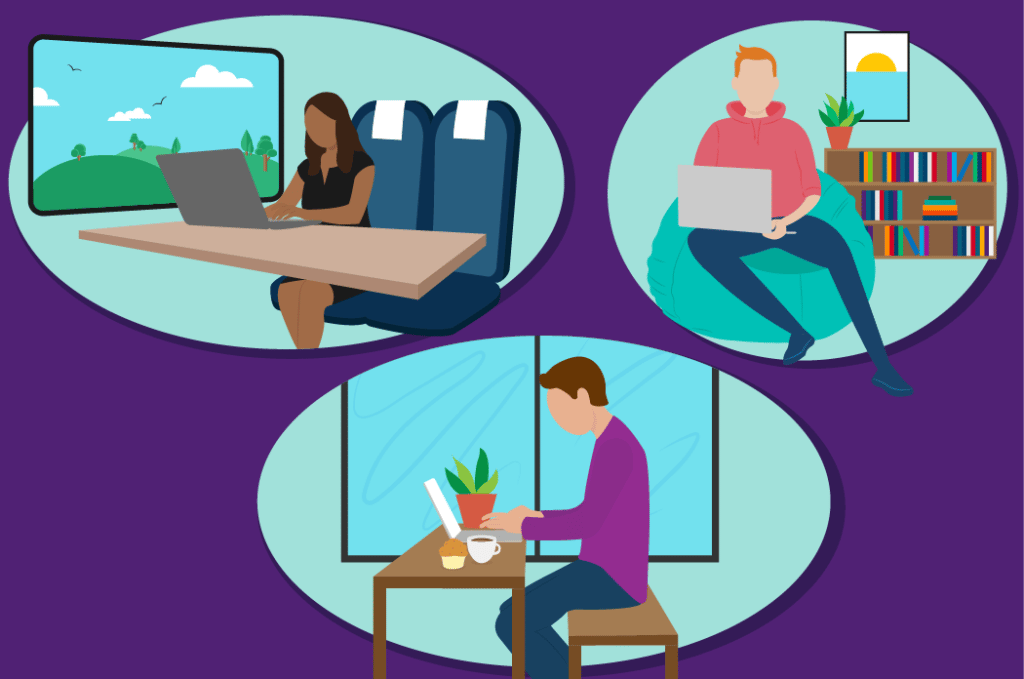By Sanjay Khatnani, Managing Partner, J2 Solutions
The new normal. I think I can speak for most of us when I say we’re all pretty sick of hearing that expression. But the reality is—we’re living it. Life as we knew it is gone; we will never go back to the way things were pre-pandemic. And while I look forward to the day when I bid a fond (overdue) farewell to my family’s collection of masks, I continue to celebrate some of the positive changes I’ve observed over the past year.
we will never go back to the way things were pre-pandemic. And while I look forward to the day when I bid a fond (overdue) farewell to my family’s collection of masks, I continue to celebrate some of the positive changes I’ve observed over the past year.
The workplace has perhaps seen one of the most profound shifts during this time. With no more than a few days’ notice, we were all forced to adapt to a new way of working. Though unexpected and a bit disorienting at the time, those changes led to an exciting evolution of the modern American workforce.
Here are some of the workforce shifts that I’ve observed over the past year:
Employees are choosing their hours: When the business community went remote, many employers were forced to shift their viewpoint on what constituted the traditional workday. Regardless of job title or industry, professionals coast to coast were thrust into a new work environment as they juggled family dynamics, technology glitches and a new work paradigm. Over time, the definition of the workday began to evolve; employees were getting the job done, one way or another—even if it wasn’t within the strict parameters of the traditional 9 to 5 day. After mastering the art of workplace flexibility, many have become accustomed to it—and even thrive under such conditions.
Recognizing the positive impact on employee morale, productivity and loyalty as a result, many employers are now making it official, offering a more long-term option to continue with the flexible workday. I predict this trend will only gain momentum in the months and years ahead.
Remote doesn’t necessarily mean working from home: A year ago, most of us were stuck inside the four walls of our respective homes. In some states, even parks were off-limits, leaving us with very little variety in our daily lives. Without an office to frequent during the work week, many of us developed cabin fever—longing for a change of scenery.
Today, we are in a much different place. The workforce is still largely remote, but we are no longer bound to our homes. We can take our home office on the road. Want to leave the state for a month and visit mom and dad in Florida? Work from there. Want to rent a house at the Jersey Shore? Work from there. What about your local park? You can even work from there, using your smartphone as a personal hotspot. These days, an employee’s physical location isn’t much of a factor in their ability to do their daily job.
Employees are being incentivized to take vacation. Yes, you read that right—and the reason is two-fold. First, and perhaps the most obvious, employers want to prevent employee burnout. And with few vacation options to choose from these days, employers want to make sure employees are taking time to rest, relax and rejuvenate, whether they leave their homes or not.
On the flip side, with so few vacations happening over the past year, a vast majority of employees have accrued paid time off. By incentivizing employees to take vacation during the pandemic, employers can prevent a surge of PTO requests that will inevitably come flooding in when the pandemic subsides.
Employers are encouraging staff to end the workday at a certain time. I recently saw a cartoon by David Sipress that asks, “I can’t remember—do I work at home or do I live at work? It’s a fair question these days. Working at home has tremendous benefits and is a welcomed way of life for many. However, there is something to be said for walking out of a physical office building at 5:00; it signals the end of a workday, physically and mentally. But when your office is your home and your home is your office, those lines are blurred. Many find themselves constantly checking and responding to emails—from the time they open their eyes to the time their head hits the pillow.
Employers want to encourage time away from “the office,” whatever form that takes. By encouraging their staff to shut down, mentally and technologically, employers tell their employees that it’s okay—even expected—to be unavailable for work outside of working hours.
Businesses have evolved with the changing tides of the world. While some struggled with the unexpected twists and turns, many found ways to ride the wave, adapt and make workplace improvements that weren’t even on the radar a year and a half ago.
What positive changes have you observed in today’s workforce? Let me know.
